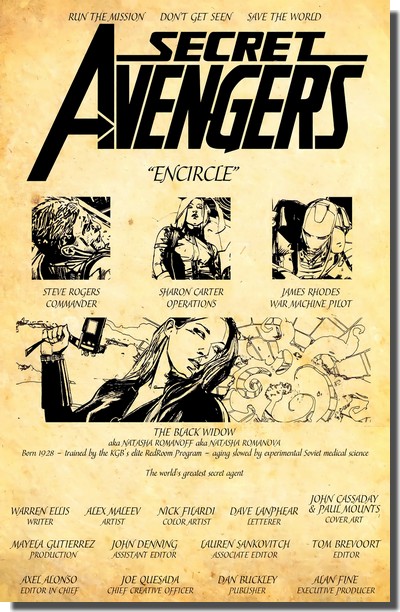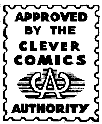| |
| In the real
world, time travel is no problem to speak of - as long as
you're headed into the future, that is. On a theoretical
level, the concept is a fundamental aspect of Einstein's
theory of relativity, and on a practical level we all
know that time does not stand still and we will therefore
find ourselves in the future (for example tomorrow).
Essentially, it's just the speed of our trip to the
future which raises questions. Someone travelling aboard
a space rocket at near light speed, for example, would
find that one year's travel onboard equals 223 years for
folks back at the launchsite on Earth (Davies, 2003).
That's not part of our real world experience only because
we have neither the technology nor the energy at our
disposal to travel at near speed of light. No, the really tricky
aspect of time travelling only kicks in when you're
thinking of going back in time. Now there's
nothing in Einstein's theory that precludes this per se,
but a huge stumbling block lies with the fact that even
just going back to yesterday violates the law of
causality, i.e. the balance of cause and effect, which
runs through the entire universe - whenever something
happens, this leads to something else, and so on and so
on. It is an endless and - most importantly - one-way
string of events as the cause always occurs before the
effect. This defines our reality, and although other
realities are in theory conceivable (e.g. where the
thunder precedes the lightning), the basic laws of
physics in such a reality would utterly violate reality
as we know it. This is the prime reason why many
scientists quite simply dismiss time travel into the past
as an impossibility (Davies, 2003), whilst others feel it
could only happen within certain strict limitations
(Sanders, 2010).
Even on a
purely theoretical level, time travel is a tricky
subject, but with Secret Avengers #20 readers
quickly realize that Warren Ellis has done all of his
homework in all of the relevant fields.
|
| |
| After activating the Escape
Hatch device, the Black Widow finds herself
transported five years back in time and to the
stately Villa Vedova (which, in Italian, is
"widow") near Trieste (Italy). However, she
also realizes that she knows little to nothing
about time travel - not the least because she
never listened to fellow Secret Avenger and
bright scientist Henry McCoy (a.k.a. The Beast)
talk about it.
|
|
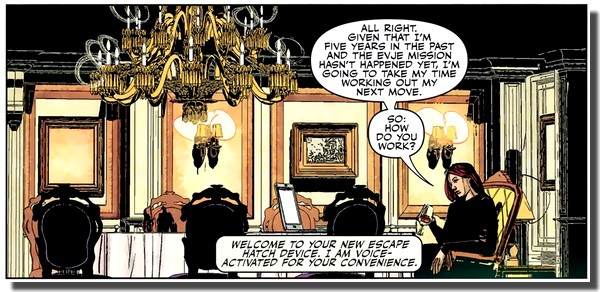 |
|
| |
| Deciding to
proceed with caution, she takes time to fully familiarize
herself with the device, and it is here that Natasha Romanova (who
has her own personal experience with time as she was born
in 1928 but ages slowly due to having been treated with
secret Soviet medical technology) learns the most
important rule of time travel - the timeflow must be
preserved. |
| |
 |
|
By having the device
programmed with a few instructional messages for
the Black Widow, writer Warren Ellis also sets
things straight for the reader in a nifty way -
six pages into the story we are now all made
aware of the fact that time travel is not easy
and requires some advance thinking - because you
must avoid creating a paradox in time. This is why
Natasha Romanova can't, as she herself suggests,
simply resolve the situation five minutes before
it happens - not the least because this would
create the paradox of eliminating the reason why
she travelled back in time in the first place.
In
fact, the possibility of creating such paradoxes
in time has led a number of physicists to
conclude that time travel is not possible.
Stephen Hawking, for example, stipulated the chronology
protection conjecture which holds that the
laws of physics are such that they not only
disallow but actually prevent time travel on all
but sub-microscopic scales (Hawking, 1992) - but
he also put forward other arguments:
"So
it might seem possible that, as we advance in
science and technology, we might be able to
(...) travel into our past. If this were the
case, it would raise a whole host of
questions and problems. One of these is, if
sometime in the future we learn to travel in
time, why hasn't someone come back from the
future to tell us how to do it."
(Hawking, A.N.)
|
|
| |
| The answer
to that somewhat tongue in cheek question might be:
because time travellers not only avoid creating paradoxes
- they are unable to. This, in essence, is the conclusion
of the Novikov self-consistency principle
developed by Russian physicist Igor Dmitriyevich Novikov
in the mid-1980s to solve the problem of paradoxes
arising out of time travel (Friedman et al., 1990). The
Novikov Principle does not allow a time traveller to
fundamentally change the past in any way (and thus
create a paradox), but it does allow the time traveller
to affect past events in ways that produce no
inconsistencies - meaning that an event affected by a
time traveller will always and throughout history be an
event affected by a time traveller, so that there will be
no alternate "before and after" version to an
"original history". Or, as Sanders (2010)
phrased it in the title of an article she wrote for Science
News: "Physicists tame time travel by
forbidding you to kill your grandfather". Quite obviously you
can follow the story of Secret Avengers #20
without needing to know any of this, as Warren Ellis
mounts the suspense and intrigue of his plot by sending
the Black Widow on a mission through time with the
premise "you can't change what happened - but can
you affect and tweak it in a way which will prevent the
Secret Avengers from dying in that attack in
Norway?" She may not know it, but as of now Natasha
Romanova's moves are guided and defined by the Novikov
self-consistency principle.
And so the
Black Widow embarks on a criss-cross journey through time
and around the world in order to gain required
information and affect events in such a way that they
allow her to get ever closer to the purpose of all these
efforts - save her fellow Secret Avengers from dying in
battle against the Shadow Council in Norway. Naturally -
as we would all expect from a comic book - the heroes
ultimately do survive, but the way Warren Ellis pulls
this off is both entertaining and fascinating, just as
his overall storytelling remains consistent and coherent.
And yes,
throughout the Black Widow's quest the Novikov
self-consistency principle is observed at all times as
Warren Ellis fuses an all-out spy story with serious
physics in an impeccable and elegant way as the reader
notices that certain events in the past - which thus
happened before the fatal Norway incident anyway - are
actually tied to the Black Widow's time travels. Ellis is
completely spot on as he weaves his compelling story
without creating a single unresolved time paradox.
|
| |
| This is certainly no mean
feat for a 20 pages story in a "done in
one" comic book, and what could easily have
become either a simplistic or overly complicated
affair works flawlessly. The non-linear
storytelling is paced just right and cleverly,
but always easy to follow thanks to clear markers
where and at what point in time an event actually
takes place. The result is a superhero-scifi-spy
tale which satisfies the intellect as much as the
expectations for suspense and action. To make
things near perfect, the visuals of Secret
Avengers #20 by Alex Maleev fit this
extraordinary story like a glove as he provides
an interesting mixture of realism and mysterious
intrigue, creating an atmosphere which draws the
reader right into the story. And there's even
more - in a cameolike yet perfect setup Maleev
also pays hommage to the archetypical comic strip
spy, Modesty Blaise, and her creators, Peter
O'Donnell and Jim Holdaway, as the style of his
artwork changes to vintage newspaper strip format
as the Black Widow travels back to approximately
the time in which Modesty Blaise held sway.
|
|
 |
| |
|
|
|
| This might be the one part of
Secret Avengers #20 which could leave
some readers slightly puzzled what this is all
about, but the six "newspaper strip"
format inserts will not come across as stumbling
blocks for the rest of the story. For those in
the know, however, this is a nice touch of extra
class and a tip from Maleev's hat in the
direction of what must certainly have been one of
the major influences in the creation of the Black
Widow back in April 1964 for Tales of
Suspense #52.
And
there are even more references to comic book
history as John Cassaday's cover for Secret
Avengers #20 clearly pays hommage to Jim
Steranko's ground-breaking cover for Nick
Fury Agent of S.H.I.E.L.D. #4 (September
1968).
|
|

The Modesty Blaise newspaper
strip by Peter O'Donnell (above) as paid hommage
to by Alex Maleev (below) [click for larger
images]
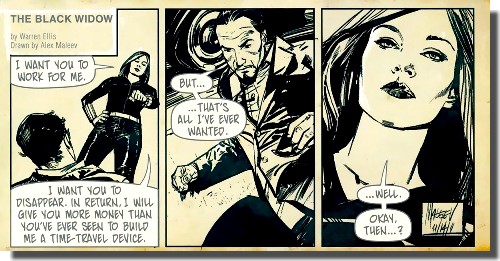
|
| |
|
|
|
| The only quibbles which some
die-hard Marvelites might have is that time
travel as depicted in Secret Avengers
#20 is not truly in line with the canonical
definition of time travel in the Marvel Universe
- where travelling through time always involves
dimensional travel and thus means travelling to
an alternate reality or creating a new alternate
reality. This effectively does away
with any time paradoxes by definition (as these
are only possible in single timeline universes),
and is actually very close to Quantum Theory,
which stipulates that the universe doesn't have
just one unique single history but instead has
every single possible history, each with its own
probability - and whilst this does make Marvel's
approach to time travel appear to be pretty close
to sound scientific concepts, it would not have
worked with this story.
The
fact that Warren Ellis - who is also known for
his passionate arguments for space travel - got
away with it would suggest that editorial at
Marvel considers Secret Avengers to be
something of a fringe title, meaning that what
gets published there causes few if any
repercussions for the Marvel Universe at large.
In that respect, it's a case of history repeating
itself rather than something to do with time
travel:
|
|
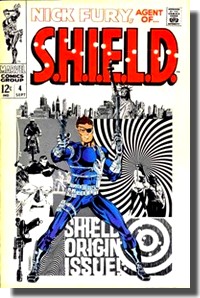
Nick Fury Agent of SHIELD
#4
(September 1968)
|
|
| |
"It
was very possible for us to do those things (...)
because no one was paying attention. So Roy Thomas
could do that on Conan, Steve [Englehart] could do
that on Doc Strange and Master of Kung-Fu, [Steve]
Gerber could do it on Man-Thing or Howard the Duck,
and I [Marv Wolfman] could do it on Dracula - and
those were the books that I think made the Seventies
at Marvel something more than just more of the same
(...) [The idea was] to try and push comics into
other things, other areas, that they had not
explored." (Marv Wolfman in Siuntres, 2006)
|
| |
| Comic book history of
course tells us that whilst editorial at Marvel wasn't
paying attention, readers were, and all the books
mentioned by Wolfman did reasonably well for a while and
also received critical acclaim. Secret Avengers
#20 took 47th place on Diamond's Top 300 comic
book sales chart with 38,200 copies for North America in
December 2011 [3], which placed it well in the shadow
of that month's top-selling Justice League #4
with 142,200 sold copies but also enabled it to, as
Wolfman had put it, "push comics into other
things, other areas, that they had not explored." Now of
course time travel has been explored extensively in
comics, but very few have gotten it right the way Warren
Ellis has for Secret Avengers #20 - which is
also, to a certain extent, ironic because just as
impressively as Ellis has succeeded at giving readers a
really good time travel comic book, his fellow British
writer colleague Grant Morrison had failed not only
completely but actually quite miserably on the same topic
in 2011 with his five issue drag The Return of Bruce
Wayne.
Secret
Avengers #20 is, above all, a nifty little
done-in-one comic book. If you are looking for a really
good comic to give to someone who has no idea of the
medium as it works today - Secret Avengers #20
would be an excellent choice. For those already into
comics, it is quite simply highly recommended.
|
| |

 #20
#20
